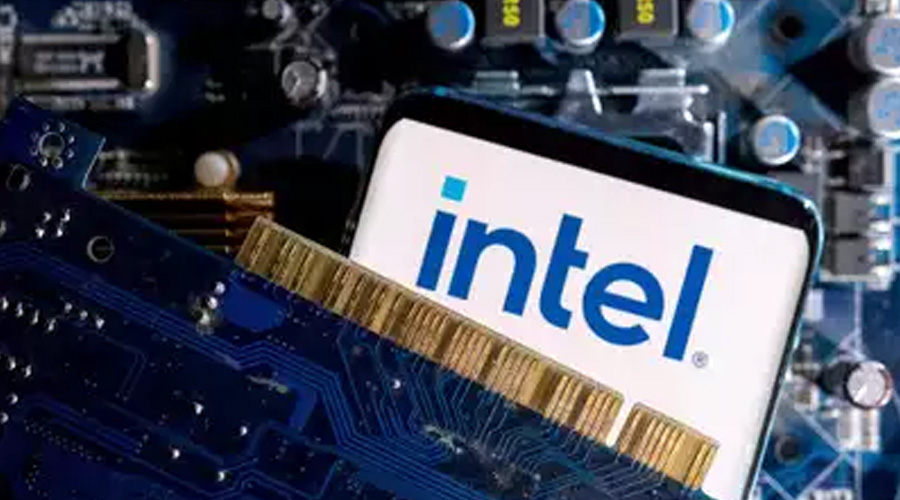

The Dow Jones Industrial Average (DJIA) is set to witness a massive change as Nvidia is going to replace Intel. It is scheduled to happen on November 8, 2024, marking an important shift in the semiconductor industry.
The shocking change can be attributed to the explosive growth of Nvidia and Intel's inability to keep up with rapidly changing industry demands. Known for its cutting-edge AI chips, Nvidia joins the elite list of companies that have replaced Intel. Once a leading name in semiconductor technology, Intel is now entering a challenging era.
Nvidia's shares have rallied more than 900 per cent in the last two years. Unprecedented demand for processing artificial intelligence chips is behind the surge.
Nvidia’s AI chips have become a necessity for several industries requiring considerable data processing and machine learning. The AI chipmaker’s share valuation has risen to US$3.32 trillion, placing it right behind Apple as the world’s most valuable company. Tech behemoths such as Microsoft, Google, and Meta rely on powerful GPUs from Nvidia as these companies begin to up their own AI capabilities.
The company, as per its chief executive, Jensen Huang, plays a critical role in innovation around AI. He mentioned it will soon be launching a new family of AI-focused chips akin to the H100 GPU. Its latest models "have gone insane," he added.
The fact that Intel lost a seat at the DJIA is telling of how it has fallen behind competitors such as Nvidia and AMD. From being the world's chipmakers' leader, Intel faced several failed attempts to adjust to the new demands for change. As a result, Intel has slowly lost the market share it once held against.
Intel has kept its focus on traditional PC processors in an industry that is now being increasingly driven by AI data centres and applications. The stock price of the company has declined by over half this year. This sudden fall in stock prices signifies investor concerns over whether the company can pick up the pace in AI technologies to regain its lost status.
According to the words of Adam Sarhan, founder of 50 Park Investments, "Intel has fallen behind," explaining that the DJIA needs some forward-thinking companies. The problems of Intel have been exacerbated by cost-cutting practices, layoffs, and the massive fall in stock prices. Intel’s stock price currently stands at around US$23.20. It is a proof that shows how Intel fails to regain back the edge that it held long ago in an industry.
Nvidia's inclusion and Intel’s removal have broader implications for the representation of the US economy. The DJIA, though historically composed of industrial companies, has become increasingly modernized in its composition. It now includes tech giants that reflect today's economic landscape better. Nvidia’s addition serves as a strategic move to make the index more comprehensive in capturing the growing importance of AI within the American economy.
Furthermore, the recent stock split of the company has eased the way for its entry into the index. A lower share price has now made it compatible with a price-weighted index like DJIA. In contrast to the S&P 500 indexes that weigh companies based on market capitalization, DJIA favours stocks with manageable share prices.
The shift from Intel to Nvidia also represents a larger shift within the semiconductor industry itself. From having been centred on traditional computer processors, the industry has shifted towards AI, data centres, and cloud computing technologies.
Intel's exclusion from the DJIA represents its failure to adapt to such trends. It represents instead the payoff for any other technology focusing on high-growth areas like AI. The DJIA entry for Nvidia would be one milestone while Intel’s removal is a shocker for many.
The Dow does not have an impact on institutional investment as the S&P 500 does. Becoming a part of the DJIA has elevated Nvidia's status and secured its position as the leader in AI. It is a sign of a changing US economy, which is now dominated more by advanced technology than by traditional manufacturing.
The exclusion of Intel from the DJIA and Nvidia’s addition means more than a reshuffling. It reflects a changing of the tide in terms of the focus of the technology world. The reason behind Nvidia's rapid ascendancy lies more in AI demand. In this manner, AI and data processing form a central part of today's economy.
Intel’s removal further reflects problems that a firm can experience in case of being unable to adapt itself to a world dominated by technology. It indicates the broader shift happening within the semiconductor industry, away from the traditional measures of innovation.
For the first time, AI and technology would be taking the driver's seat in fueling the next phase of growth in DJIA.
